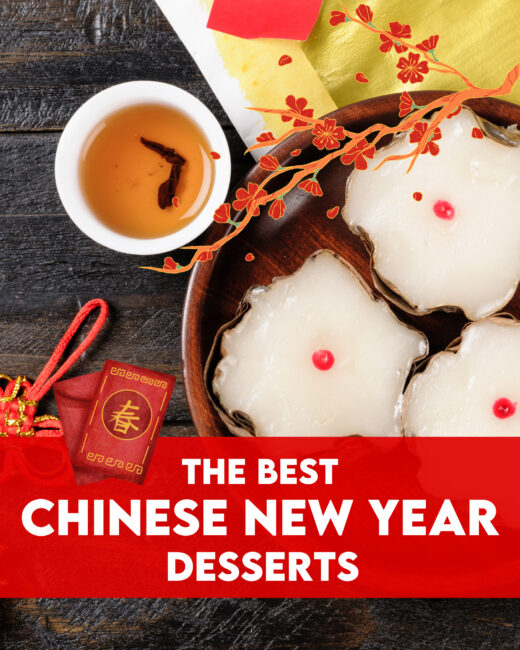The Best Chinese New Year Desserts • Steamy Kitchen Recipes Giveaways
It’s that time of year again – Chinese New Year! And you know I can’t let it pass without talking about traditional Chinese New Year desserts. I’ve been diving into these sweet treats for most of my life, and let me tell you, they’re more than just a sugar rush. Each of these Chinese desserts is a piece of history, and a nod to some long-standing traditions.
As we roll into the New Year celebrations, we’re giving these desserts the spotlight they deserve. Trust me, they’re not just there to look pretty on your Instagram feed. They’ve got stories, they’ve got meaning, and yes, they’re absolutely worth that extra gym session later.
1. Nian Gao (Sticky Rice Cake)


About: First up is the classic Nian Gao, or as some like to call it, Sticky Rice Cake. Made from glutinous rice flour and often sweetened with brown sugar, it has a chewy, almost mochi-like texture. And let’s not forget, during the Chinese New Year celebration, it’s practically everywhere.
What It Symbolizes: Nian Gao is all about growth and progress. In Chinese, “nian” means “year”, and “gao” sounds like “high” or “tall.” So, this cake is a clever play on words for a “higher year”, symbolizing a wish for improvement and success in the coming year. It’s basically an edible wish for a better tomorrow.
Recipe Page: Wanna try making it yourself? Judy from The Woks of Life has an excellent Nian Gao recipe. Check it out here: The Woks of Life Nian Gao Recipe.
2. Fa Gao (Fortune Cake)
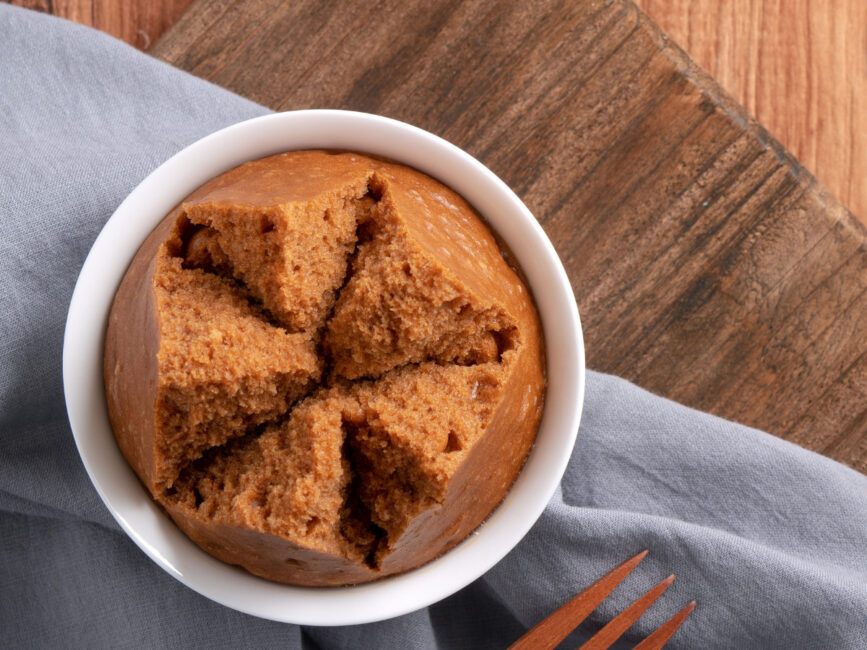

About: Next on our list is Fa Gao, also known as Fortune Cake. This fluffy, sponge-like cake usually comes in neutral or bright, cheerful pastel colors. It’s made with simple ingredients but the magic is in how it splits open on the top when steamed, kind of like a smile. Trust me, it’s as fun to make as it is to eat.
What It Symbolizes: Fa Gao is all about good fortune. The “fa” in its name means “prosperity” and “expanding”, while “gao” simply means “cake”. Eating this during the Spring Festival is like giving yourself a pat on the back, saying, “Here’s to good fortune in the new year.” Plus, the way it splits (or “blooms”) on the top symbolizes opening up to new opportunities and a prosperous future.
Recipe Page: Elaine from China Sichuan Food has a great recipe for making your own Fa Gao at home. Take a look here: China Sichuan Food Fa Gao Recipe.
3. Tang Yuan (Sweet Rice Balls)
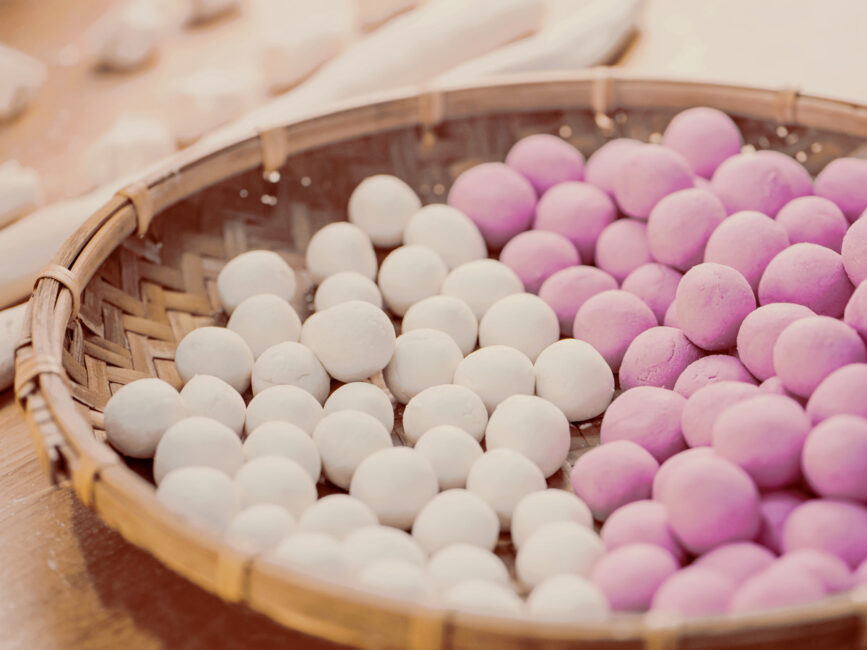

About: Let’s talk about Tang Yuan, or Sweet Rice Balls. These little round delights are made from glutinous rice flour and can be filled with goodies like black sesame, red bean paste, or even peanut butter. They’re usually served in a bowl of sweet soup. Comfort food at its finest.
What It Symbolizes: In Chinese culture, the round shape of these chinese glutinous rice balls represents family unity and togetherness. Eating them during the Lantern Festival or on New Year’s Eve dinner is a way of saying, “We’re in this together, through thick and thin.” This dessert is a celebration of family bonds.
Recipe Page: Craving some Tang Yuan? Wei from Red House Spice has a fantastic recipe that you can follow. Check it out here: Red House Spice Tang Yuan Recipe.
4. Almond Cookies
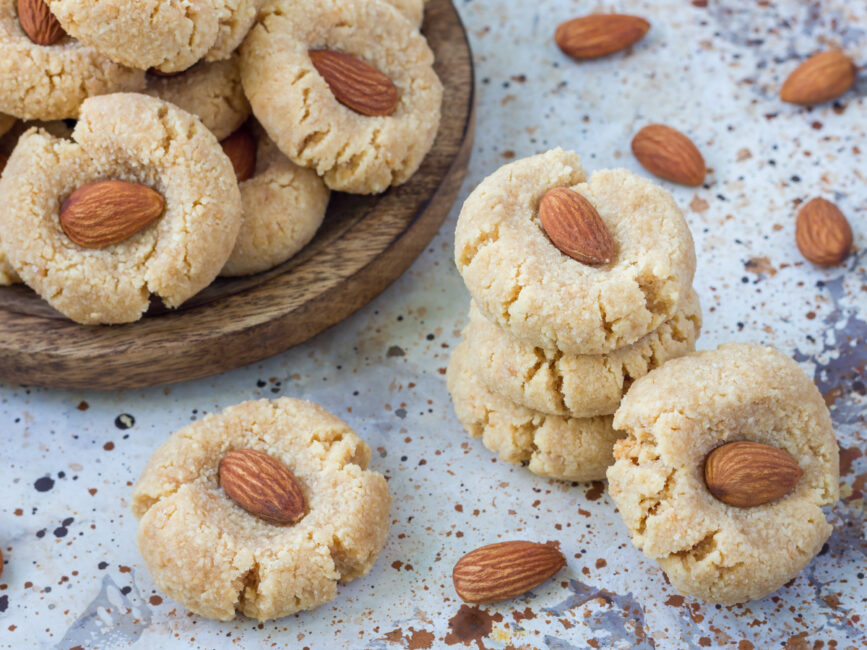

About: Next up are Almond Cookies, which are a staple in Chinese cuisine, especially during the holiday season. Made with almond flour, these cookies are crumbly, nutty, and have just the right amount of sweetness. They’re the kind of treat that makes you want to reach for just one more… and maybe one more after that.
What It Symbolizes: In Chinese culture, almonds represent good fortune and prosperity, but also these cookies look like coins! So, they’re kind of like little edible good luck charms.
Recipe Page: Fancy baking some? Jeanette from Wok & Kin has got you covered with her Chinese Almond Cookies recipe. Give it a try: Wok & Kin Almond Cookies Recipe.
5. Pineapple Tarts
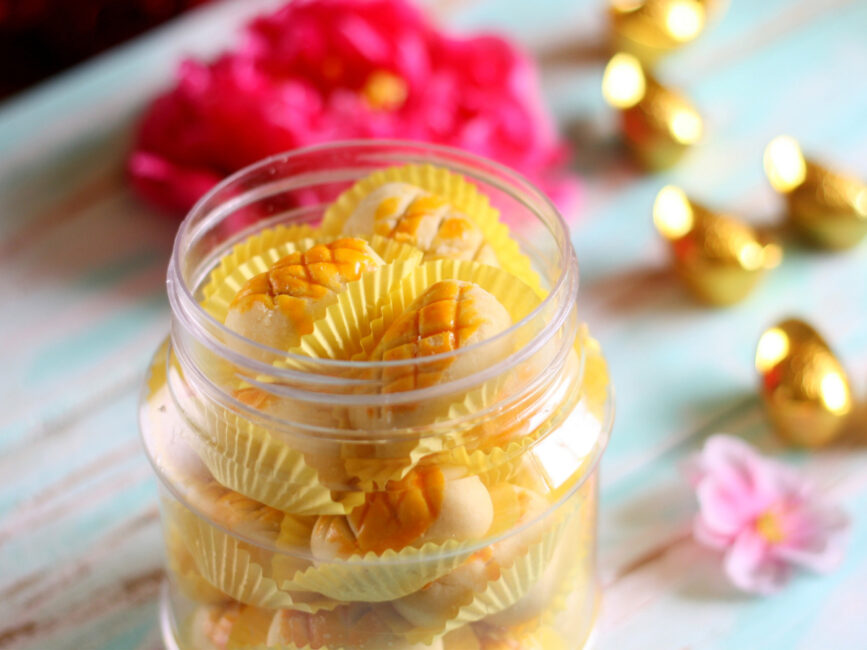

About: Moving on to Pineapple Tarts. If you’ve never tried these, you’re missing out. They’re small, buttery, and filled with a sweet, tangy pineapple jam. A popular way to sweeten up the Lunar New Year.
What It Symbolizes: Pineapple in several Chinese dialects (“ong lai” in Hokkien and Cantonese) translates to “fortune comes”, so these tarts are all about welcoming wealth and good luck. Eating them is like signaling to the universe that you’re ready for all the good stuff this year has to offer.
Recipe Page: Bee from Rasa Malaysia has a fantastic Pineapple Tarts recipe that’s a must-try. Check it out here: Rasa Malaysia Pineapple Tarts Recipe.
6. Ba Bao Fan (Eight-Treasure Rice Pudding)
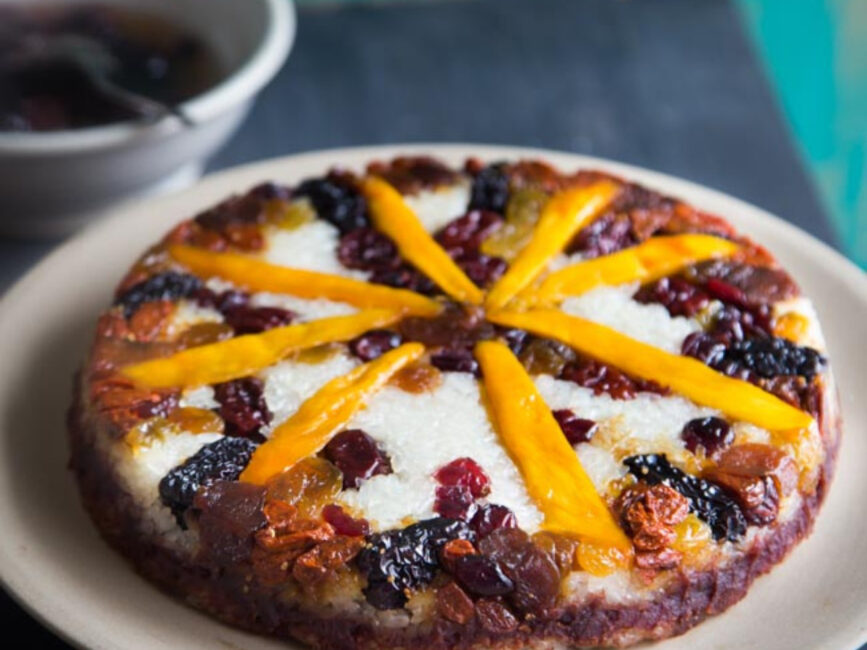

Photo Credit: Whattocooktoday.com
About: Ba Bao Fan, or Eight-Treasure Rice Pudding is like a work of art! Made with glutinous rice and layered with a variety of ingredients like red bean paste, lotus seeds, and dried fruits, it’s as beautiful as it is delicious.
What It Symbolizes: Each ingredient in Ba Bao Fan symbolizes a different blessing, making it a literal treasure trove of good wishes. It’s a traditional Chinese dessert that’s all about abundance and prosperity. Plus, the number 8 in Chinese culture is associated with luck and wealth, so this pudding is like a jackpot of good fortune.
Recipe Page: For those feeling adventurous in the kitchen, Ellen from The Hong Kong Cookery has an authentic Eight-Treasure Rice Pudding recipe. Give it a go: The What To Cook Today Ba Bao Fan Recipe.
7. Hong Kong Egg Tarts
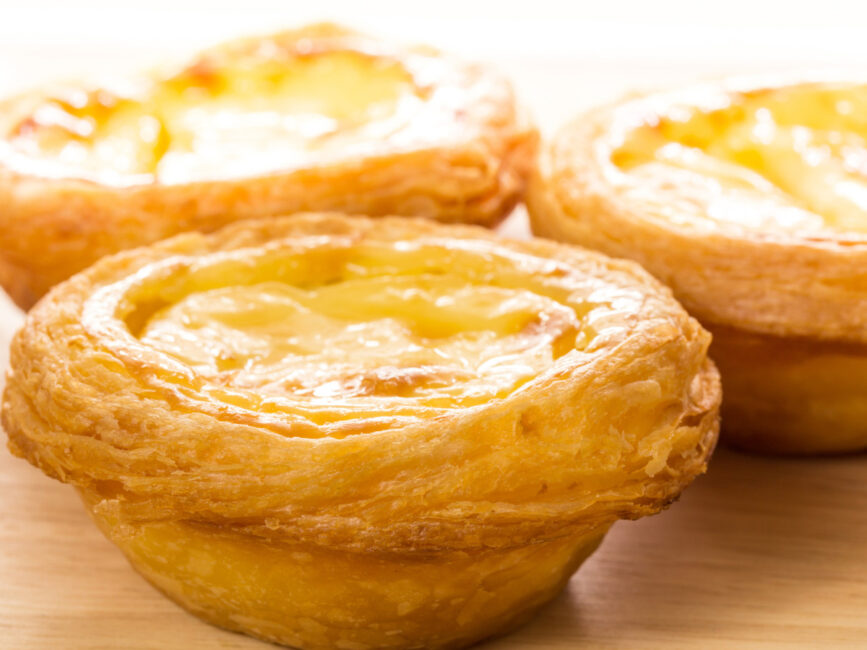

About: Have you ever had Hong Kong Egg Tarts? These are the crown jewels of many a dim sum menu. With their flaky pastry crust and a smooth, creamy custard filling, they’re absolutely addictive. The texture, the taste, it just… it has it all!
What It Symbolizes: Egg tarts don’t have a deep symbolic meaning for Chinese New Year traditions, but they’re a beloved staple in Hong Kong’s culinary scene. However, eggs do represent fertility in Chinese culture, so if you’re looking to be blessed with a bundle of joy in the coming year, this may the perfect (yummy) good luck charm!
Recipe Page: Maggie from Omnivore’s Cookbook has an amazing Hong Kong Egg Tart recipe that’s definitely worth trying. Here’s the link to the full recipe: Omnivore’s Cookbook Hong Kong Egg Tart Recipe.
8. Jian Dui (Sesame Seed Balls)
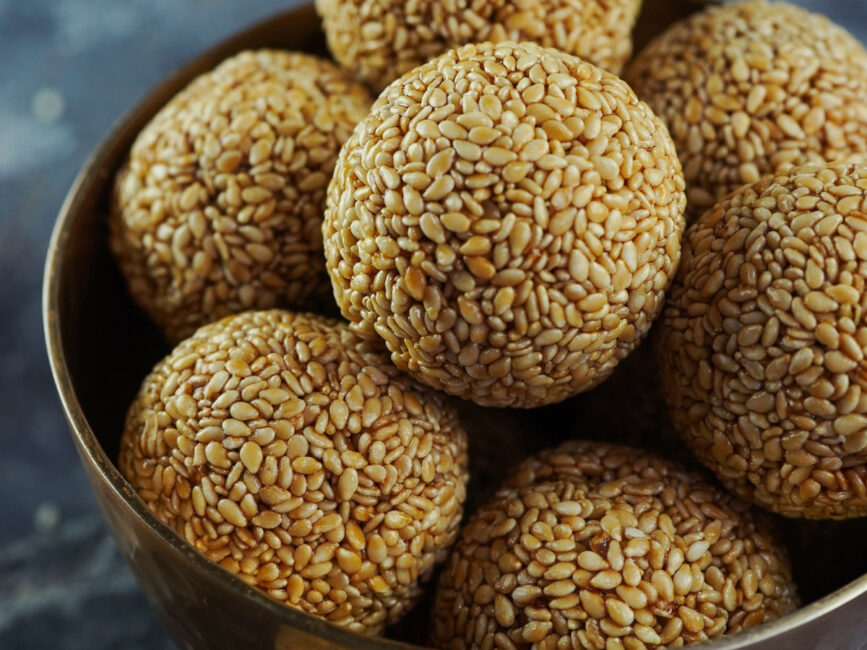

About: Jian Dui, or Sesame Balls, are one of my FAVORITE desserts. They’re crispy on the outside, chewy on the inside, and rolled in a heap of sesame seeds. Typically filled with red bean paste or black sesame, they’re a delicious mix of textures and flavors.
What It Symbolizes: In Chinese culture, the round shape of Jian Dui is a symbol of togetherness. The golden brown color signifies prosperity and wealth. So, popping a few of these is akin to munching on good fortune.
Recipe Page: For a step-by-step guide on making these, check out WoonHeng’s recipe. It’s clear, straightforward, and will guide you to perfect Sesame Balls: WoonHeng Sesame Balls Recipe.
9. Gui Hua Gao (Osmanthus Jelly)
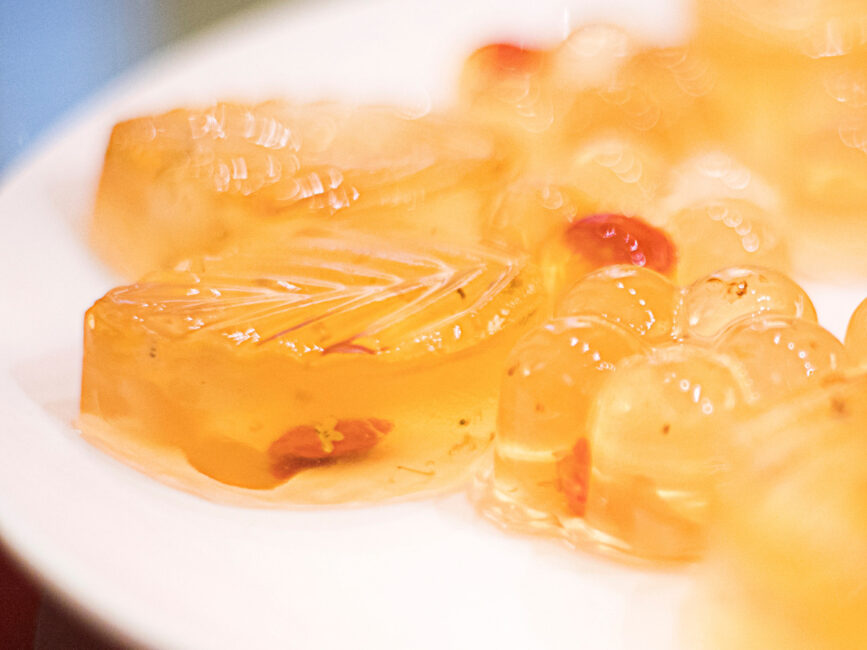

About: Gui Hua Gao, or Osmanthus Jelly, is a floral delicacy. This dessert is made from osmanthus flowers and has a subtle but sweet aroma. It’s usually made in the shape of a fish or flower, and tastes like a little piece of spring in every bite.
What It Symbolizes: Osmanthus is the flower symbolizes love and romance in Chinese culture, and the jelly dish generally represents friendship, favorable fortune, and success.
Recipe Page: Nancy from Nomss.com has a lovely Osmanthus Jelly recipe that’s both simple and delightful. Here’s where you can find it: Nomss.com Osmanthus Jelly Recipe.
10. Fah Sung Thong (Peanut Brittle)
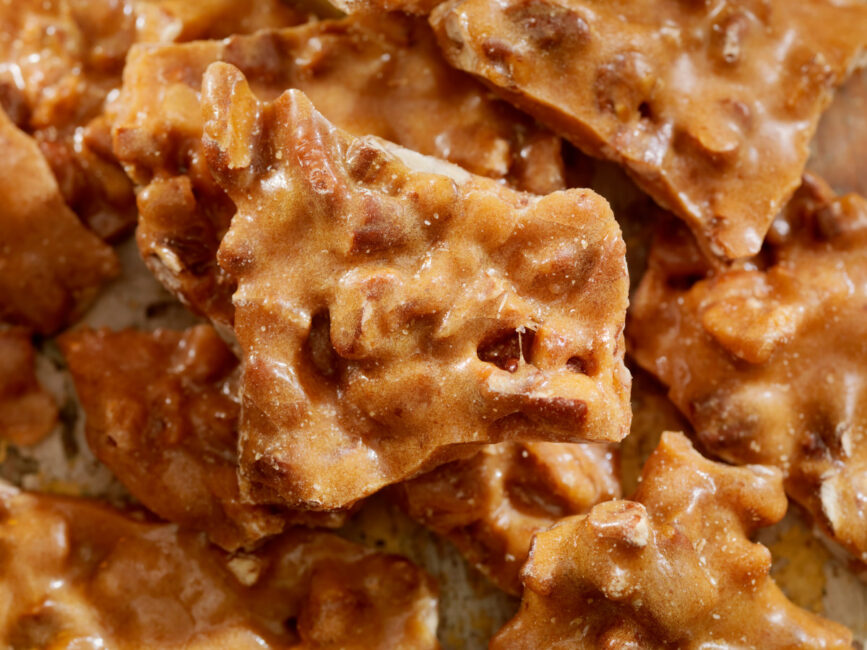

About: Last but not least is Fah Sung Thong, or Peanut Brittle. It’s a crunchy, nutty, and sweet snack that’s a favorite during Chinese New Year. Made with peanuts and sesame seeds, it’s the perfect combination of flavor and crunch.
What It Symbolizes: Peanut Brittle in Chinese culture symbolizes health and longevity. The addition of peanuts, known for their health benefits, makes this treat a wish for a long and healthy life.
Recipe Page: For those who want to give it a try, Linda from Roti n Rice has an excellent Peanut Brittle recipe. Check it out here: Roti n Rice Peanut Brittle Recipe.
That’s a wrap on our Chinese New Year dessert tour. We hope you’ve had your fill of tradition, taste, and a bit of kitchen adventure (because let’s be real, sometimes cooking goes sideways). Whether you nail these recipes or end up ordering takeout, I hope you enjoy both the moments and the munching. Hope your year is as sweet and fulfilling as these treats. Happy New Year, everyone!
